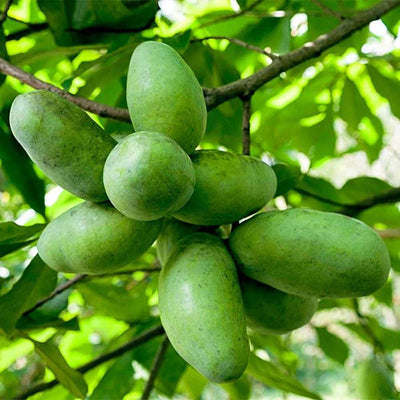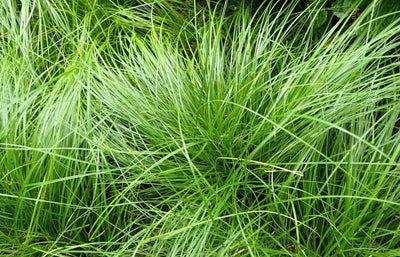Discover Perfectly Adapted Paw Paw Trees Grown Locally in Tennessee
Seeking the unique tropical flair of “pawpaw trees for sale” combined with the capability to produce abundant sweet custardy fruits easily in your backyard orchard? As Tennessee’s leading pawpaw nursery focused exclusively on maximizing variety diversity and climate resilience across Southern zones for over 30 years, TN Nursery offers rare insider guidance so you can plant premium pawpaw trees precisely matched to your precise landscape environment and goals – no guesswork required!
Premium Paw Paw Trees For Sale
From compact 10-12 foot patio varieties perfect for easy netting/harvesting to towering 25-foot orchard giants built for heavy commercial production, the pawpaw tree offerings within our 100-acre fruiting nursery lead the state in terms of climate-matched selection, cold hardiness, and fruiting potential, including:
- Heavy-bearing named cultivars like Pennsylvania Golden boast exceptional sweetness
- Grafted pawpaw trees fruiting abundantly within just 2-4 seasons after planting
- Dwarf self-fertile varieties suited to small spaces, needing only one plant for fruits
- Wild Tennessee natives naturally acclimated to humidity, droughts, and bitter Zone 6 winter winds
With stock spanning across all dimensions, soil moisture needs, and uses – let our guidance match you with ideal pawpaw trees to overcome microclimate challenges!
Paw Paw Trees For Sale Focused on Tennessee Performance
All of the pawpaw trees within our inventory are propagated or grafted onsite and then nurtured in optimized Tennessee soils specifically for abundant fruit production potential, disease resistance, and vigor within Zones 6-7 seasonal shifts.
Leveraging 50+ years of insider perspective into Tennessee's variable humidity, drought patterns, and other environmental stressors Pawpaws face, our experts hand-select only the very best locally-adapted plants as parent stock when introducing new improved additions to inventory.
You’ll enjoy reliable tropical bounties with less intensive inputs compared to imported nursery stock. Expect greater fruit quantities and tree health tailored to overcome Midstate-specific climate and fungal and soil condition issues!
Passionate Care for Productive Paw Paw Trees
At TN Nursery, sharing our pawpaw-growing wisdom through vibrant fruit-filled trees motivates everything we do. Expect precise propagation and care practices developed through Tennessee-focused trials yielding:
- Open canopies through careful structural pruning, preventing disease while improving fruit yields and sweetness
- Integrated solutions minimizing pests without sacrificing production quantity/quality
- Custom soil amendments to avoid an imbalance between vigor and abundant fruiting
- Multi-season appeal – lovely purple flower bursts in spring followed by lush green summer foliage
- Winter support enhancements like sheltered areas, wind protection, and dormant spraying
Our passion culminates in peak-performing pawpaw trees, allowing you to grow tropical bounty sustainably across Tennessee!
Connect With TN Nursery’s Paw Paw Specialists
Contact our team anytime online or at 931-692-4252 to discuss finding pawpaw trees guaranteed to deliver decades of backyard fruit abundance perfectly suited to your precise Zone 6 or 7 micro-climate. We look forward to helping your pawpaw dreams bear fruit!
Pawpaw trees, scientifically known as Asimina triloba, are deciduous trees. They are primarily found in regions from the Gulf Coast to the Great Lakes and as far west as Texas. These unique trees are members of the Annonaceae family and can grow up to 20 feet tall. They produce large, tropical-looking leaves that can reach up to 12 inches long, and their flowers are purplish-brown and bell-shaped.
Pawpaw trees are renowned for their delectable fruits, which have a creamy, custard-like texture and a sweet flavor, frequently compared to a mixture of banana, mango, and pineapple. These fruits are generally large, weighing anywhere from half a pound to a pound, and are often called "poor man's bananas" or "Indiana bananas." They are generally gathered in the fall and can be consumed fresh or used in different recipes, including pies, ice cream, and smoothies.

Despite their delicious fruits, pawpaw trees remain relatively obscure compared to other fruit-bearing trees. However, they possess remarkable ecological and cultural significance. For instance, they are an essential food source for wildlife, including raccoons, opossums, and squirrels. Additionally, they have a rich cultural history and have been used by Native Americans for centuries in standard medicine and as a food source.
Ecological Importance of Paw Paw Trees
Pawpaw trees play a vital role in their ecosystems, supporting diverse wildlife populations. Their fruit is a crucial food source for various animals, including raccoons, opossums, squirrels, and numerous bird species. Additionally, paw trees serve as host plants for the nymphs of the zebra swallowtail butterfly, making them essential to the butterfly's life cycle.
Moreover, paw paw trees contribute to soil stabilization and erosion prevention with their extensive root systems. They thrive in moist, well-drained soils, often found along riverbanks, floodplains, and woodland edges. These trees enhance biodiversity by providing habitat and food sources for various organisms, contributing to their ecosystems' overall health and resilience.
Paw paw trees have historically held cultural significance among Native American tribes and early settlers. Indigenous peoples utilized various parts of the tree for medicinal purposes, including treatments for fever and gastrointestinal issues, and even as a natural insect repellent. The Cherokee, in particular, valued the fruit as a dietary staple and incorporated it into traditional recipes.

Early European settlers learned about pawpaw trees from Native Americans and adopted their uses of the fruit and other parts of the tree. However, paw cultivation and consumption gradually declined despite cultural importance as settlers favored commercially available fruits like apples and peaches.
Paw Paw Tree Characteristics and Culinary Uses
The pawpaw tree is home to the most fascinating fruit - the pawpaw fruit. These fruits are oblong and can range between 2 to 6 inches long. As they ripen, their greenish-yellow exterior transforms into a bright yellow shade that is slightly soft to the touch. Once you slice the fruit, you'll encounter a creamy, custard-like flesh with a sweet tropical flavor reminiscent of a combination of bananas, mangoes, and pineapples. The flavors blend smoothly to create a unique taste that is easy to remember. Fresh pawpaws are undoubtedly the best way to enjoy this fruit. Still you can also use them in various culinary applications like pies, ice cream, smoothies, and jams to enhance your culinary creations.
Pawpaw fruits are a rare treat and are highly appreciated for their distinctive flavor and consistency. These fruits have a distinct, delicate, and refreshing sweetness, making them a favorite among food enthusiasts and adventurous eaters. However, pawpaw fruits are difficult to transport due to their fragile nature and limited shelf life. As a result, they are not commonly found in mainstream markets, adding to their allure and exclusivity. The difficulty in sourcing these fruits only adds to their charm, making them a positively sought-after delicacy enjoyed by those who appreciate the finer things in life.
While paw trees predominantly grow in the wild, enthusiasts and horticulturists have increasingly shown interest in cultivating them for their fruits. Pawpaw trees are relatively low-maintenance once established but require specific growing conditions to thrive. They prefer fertile, well-drained soils with a slightly acidic to neutral pH. Planting paw trees in partial shade, preferably under the canopy of taller trees, helps protect them from excessive sun exposure and wind damage.
Propagation of paw trees is primarily done through seeds, although grafting and budding techniques are also utilized to propagate selected cultivars. Seedlings may take several years to reach fruit-bearing maturity, typically around five to seven years, but grafted trees can bear fruit much sooner.
Considerations in Paw Paw Tree Cultivation
Despite their appeal, paw paw cultivation presents several challenges. One significant obstacle is pollination, as paw trees rely on specialized flies for pollination, primarily members of the genus Drosophila. These flies are attracted to the trees' foul-smelling flowers, which emit odors resembling rotting meat. With proper pollination, fruit sets can be expanded, reducing yields.

Furthermore, selecting suitable cultivars is crucial for successful paw paw cultivation. While wild paw trees exhibit significant genetic diversity, cultivated varieties are often preferred for their larger fruit size, improved flavor, and disease resistance. Popular cultivars include 'Sunflower,' 'Mango,' and 'Susquehanna.'
In conclusion, paw paw trees are fascinating native species with ecological, cultural, and culinary significance. Despite being relatively obscure, these trees offer many benefits, from supporting wildlife and enhancing ecosystem health to providing delicious fruits with a unique tropical flavor profile. While challenges exist in their cultivation, dedicated enthusiasts continue to propagate and appreciate paw trees for their intrinsic value and contributions to biodiversity and gastronomy.
Companion Plants for Pawpaw Tree



